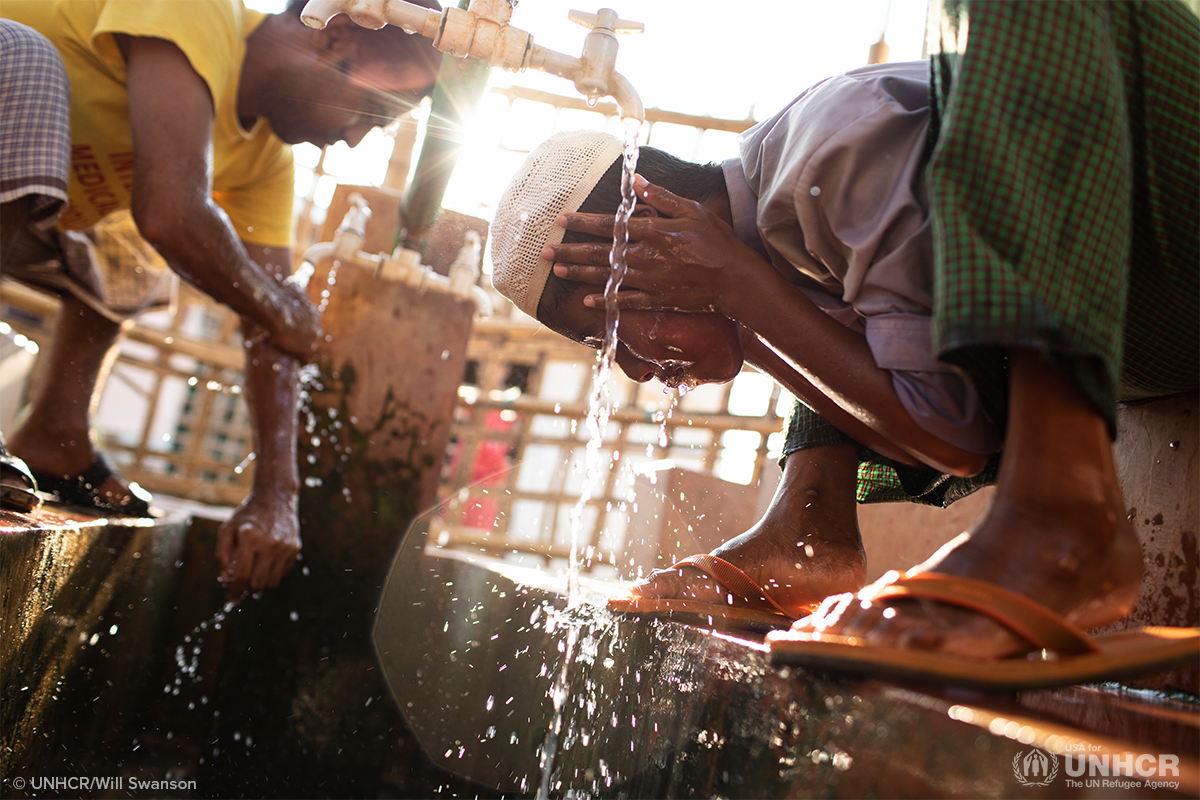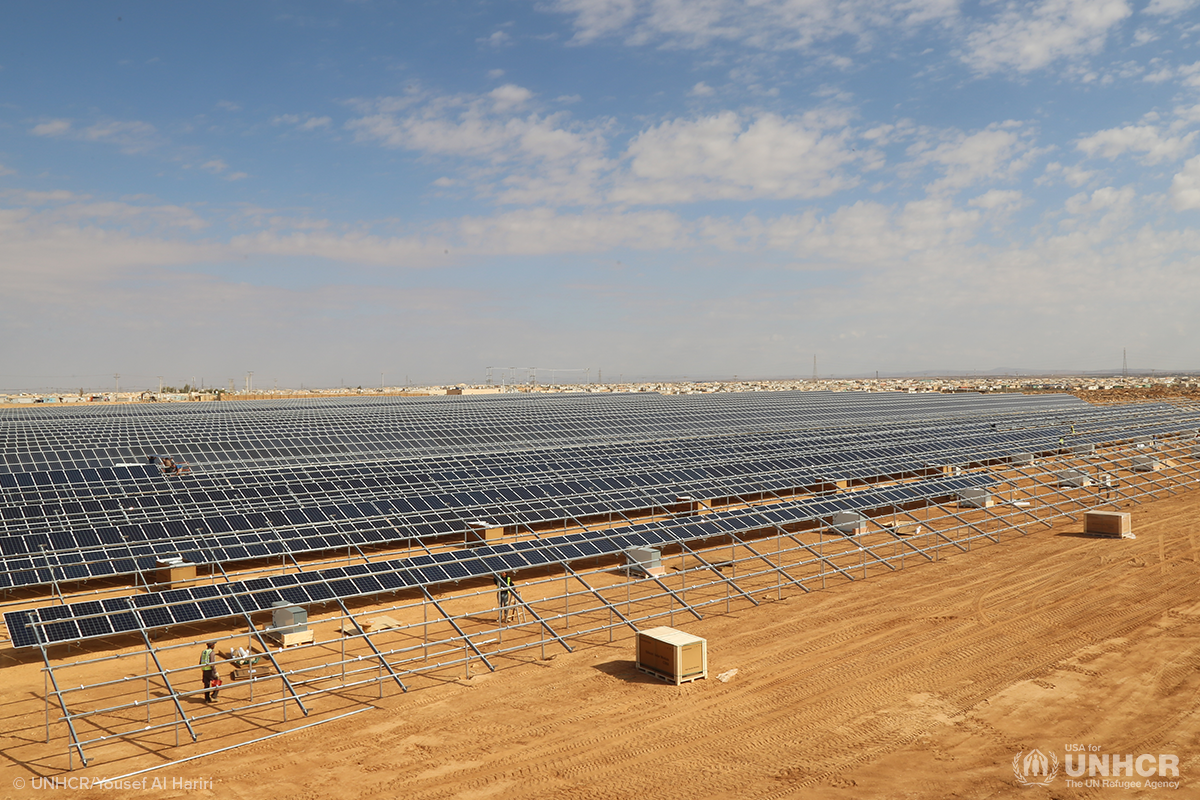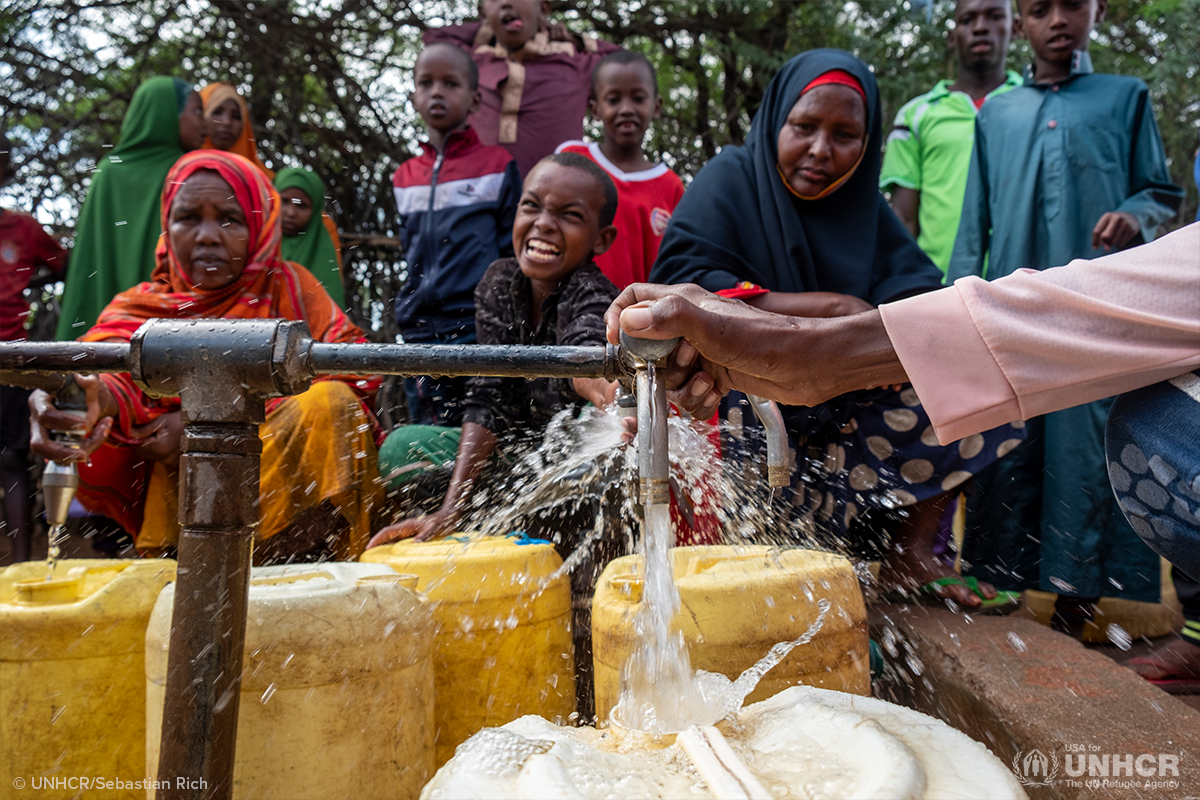Clean Energy, Clean Water: How solar power brings safe water to refugee camps
Clean water is one of a refugee's most vital needs. Water to drink. Water to use for washing, cooking and cleaning. Water is essential to protect health, prevent the spread of deadly diseases and maintain dignity. But around the world, millions of refugees struggle to get the bare minimum of water they need. In a time where practicing good hygiene is essential for preventing the spread of viruses, such as coronavirus (COVID-19), many refugees find themselves at a higher risk of contracting coronavirus because they don’t have access to proper sanitation systems and healthcare.
UNHCR, the UN Refugee Agency, is dedicated to ensuring that refugee camps around the world are equipped with efficient and safe water resources. This includes building solar panels to power water filtration systems, bathrooms and pipe systems throughout camps. These projects not only provide more water to refugee families, but also reduce the carbon footprints of camps by using clean energy.
Learn how three camps are using clean energy to provide safe water to refugees:
Kutupalong

Kutupalong refugee camp in Bangladesh is home to nearly one million Rohingya refugees, many of whom were forced to flee Myanmar in 2017. One of the biggest challenges at the camp is providing refugees with enough water to survive.
Like many refugee camps, Kutupalong began with hand-pumped water systems. Hand-pumped systems are easily contaminated, especially during floods or heavy storms. Contamination is a major concern during monsoon season when flooding throughout the camp becomes life threatening. Because of this, hand-pumped water was not a safe, long term solution for refugees.
A clean water source for Rohingya refugees became a reality when solar panels were introduced to Kutupalong camp. Solar powered water pumps pull from chlorinated water tanks, which keeps the water clean and safe from contaminants. Chlorinated tanks and solar pumps protect refugees from water-borne illnesses and are more efficient -- ensuring that more refugees can access the water they need.
Za’atari

Za’atari refugee camp in Jordan hosts more than 70,000 refugees and has the largest solar panel system to ever be installed in a refugee camp. Unlike other camps, Za’atari delivers water directly to refugees’ homes. This way, they don’t have to venture to boreholes away from their homes to collect water.
In many families, the job of water collection falls to children and women. Having to go far from the home to collect water puts women at risk of sexual and gender-based violence. Piping water directly to homes and having well-lit streets from solar energy not only improves the health and sanitation of refugee families, but also keeps them safe.
Dadaab

Dadaab refugee complex in Kenya comprises four camps that host more than 200,000 refugees total. Because of its desert climate, water is difficult to source. To address the water needs of refugees, an innovative solar and diesel hybrid system was developed that pumps water from boreholes to water storage tanks throughout the camps. Water is evenly dispersed throughout the four camps and alleviates overcrowding at individual boreholes.
Thanks to clean energy resources, like solar panels and diesel hybrid systems, refugees in the world’s largest camps have access to clean water. By maintaining safe drinking water and proper hygiene, refugees reduce their risk of illness and improve their health.
How you can help…
Providing clean water to refugees would not be possible without the support of generous Americans like you. Monthly giving is the most efficient and helpful way that you can ensure refugee families have what they need to survive. Become USA for UNHCR’s newest monthly donor and help ensure that refugees have access to safe, clean water.


